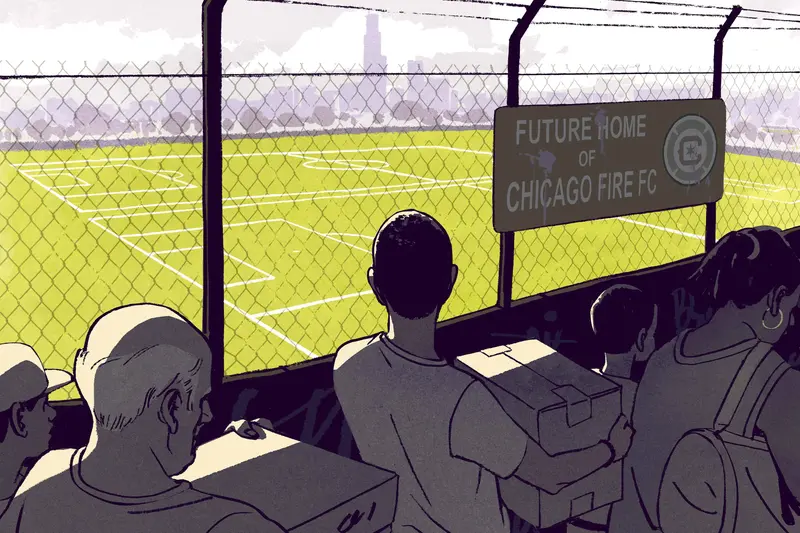This report is a collaboration between ProPublica and Chicago Tonight/WTTW News from WTTW/Chicago PBS. ProPublica is a nonprofit newsroom that investigates abuses of power. Sign up for Dispatches, a newsletter that spotlights wrongdoing around the country, to receive our stories in your inbox every week.
When thousands of families were forced to move out of the ABLA Homes public housing complex two decades ago, Chicago and federal leaders promised they would be able to come back to new housing and a revitalized community on the city’s Near West Side.
Most of the residential buildings at ABLA would be demolished. But, officials said, thousands of new homes for both poor and more affluent families would be built to replace them. The pledge was part of a 10-year plan to “transform” public housing citywide and offer a model to other cities.
Now, after building less than a third of the promised new units, officials are moving with unusual urgency to redevelop the largest plot of empty land at ABLA — but not for housing. Instead, Mayor Lori Lightfoot and the Chicago Housing Authority are planning to lease the land for decades to a professional sports team owned by a local billionaire.
Under the deal, the CHA would lease about 26 acres to the Chicago Fire Football Club, which would construct a practice facility consisting of six soccer fields and a building for training and business offices. The Fire are owned by Joe Mansueto, founder of the investment research firm Morningstar and one of Chicago’s most influential business leaders.
To housing advocates and those desperate for affordable homes, the deal is the latest in a series of betrayals by Chicago mayors and the CHA.
As its rebuilding efforts have lagged over the last 15 years, the CHA has repeatedly let its land be developed for purposes other than housing. It has sold or leased property for a nonprofit tennis academy, a charter school, a police station, medical facilities, movie production space and a supermarket, according to agency records. Federal officials have signed off on the land transactions.
“We have an agency, the Chicago Housing Authority, that is supposed to provide housing for the most vulnerable, and instead of building housing they want to give that land to a soccer team,” said Rod Wilson, executive director of the Lugenia Burns Hope Center, a nonprofit that advocates for affordable housing and equitable community development. “It seems that the CHA wants to get out of the business of providing quality housing for families.”
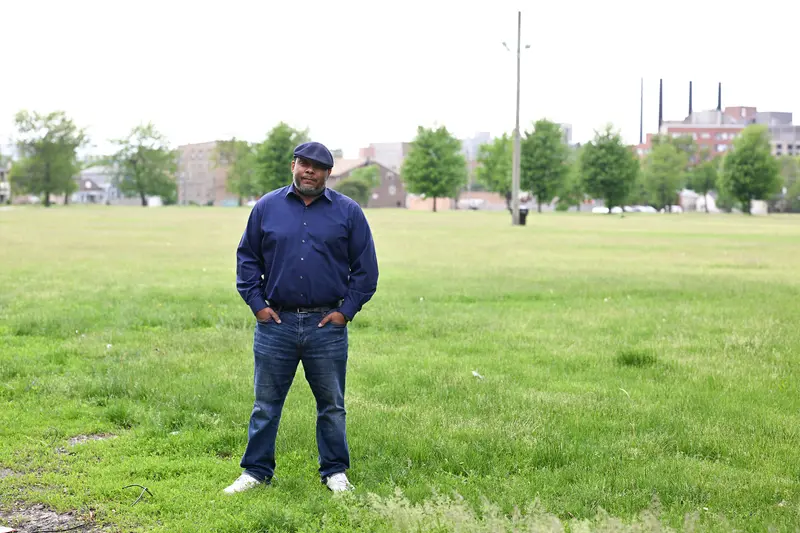
Lightfoot and the CHA are pushing the Fire deal as Chicago, like many other cities, faces an affordable housing crisis. More than 30,000 people are currently on the CHA’s waiting lists for a public housing apartment or a voucher to help them rent in the private market. And the city’s housing commissioner has said Chicago needs at least 120,000 more affordable units to house everyone in need.
While the CHA is a separate agency that is not formally part of city government, its CEO and board members are picked by — and often answer to — the mayor. It is also overseen by the federal Department of Housing and Urban Development, the source of much of its funding.
In 2000, the CHA vowed to improve the lives of its residents through what it has called the “largest redevelopment/rehabilitation of public housing in the history of the United States.” It would raze most of its apartment buildings citywide, displacing thousands of families. Then it would build or rehabilitate 25,000 units of housing within 10 years. The new communities would include people with a mix of incomes but offer far fewer homes for poor families than before.
Richard M. Daley, who was then Chicago’s mayor, and federal officials including Andrew Cuomo, then the HUD secretary, were deeply involved in crafting the plan. It received backing from nonprofit foundations and was replicated on a smaller scale in other cities.
The public housing developments were torn down, but plans for replacing them were often vague or simply abandoned. More than 20 years later, the CHA still hasn’t met its commitments. Despite receiving federal money to redevelop sites with new housing, the CHA is sitting on dozens of empty plots around the city, including the property offered to the Fire.
Altogether, 3,600 families once lived at ABLA. In 2003, as the CHA leveled most of the apartment buildings there, it announced plans to remake the development with 2,441 new and 455 rehabbed units.
After two decades, the CHA’s chosen developer has built just 667 units. The rehab work was done, but so much time has now passed that those units need to be fixed up again, the CHA says. And plots of land throughout the neighborhood remain empty. The property picked for the Fire, at Roosevelt Road and Ashland Avenue, is the largest of those vacant areas.
CHA officials now argue that the Fire deal is needed because the land has been undeveloped for so long — even though the CHA itself was responsible for leaving it that way.
“That property has been sitting vacant for 20 years and it’s time for us to do something productive with it,” said Tracey Scott, the housing agency’s CEO. The Fire proposal, she added, is “in line with our philosophy of mixed-use, mixed-income community development.”
In a statement provided to ProPublica and WTTW, the CHA said that a lease agreement with the Fire would provide funding to fix up aging ABLA properties and recreational facilities while offering job opportunities for residents. The statement repeated promises from Scott and other agency officials that the CHA still plans to deliver all the housing units it promised.
The Fire stressed some of the same points about how the agreement could benefit CHA residents. “When this location was offered by the city, we viewed it as an opportunity to increase our investment on the Near West Side while securing a site for a world-class performance center,” the team said in an emailed statement.
Many current ABLA residents said they first heard about the plan when they received a flyer from the CHA in late April, days before CHA and Fire officials held a meeting about it at a rec center next to the site. Afterward, some residents said they welcomed the Fire facility because it might create jobs or bring new businesses to the community. But others were skeptical, and some worried it was part of a plan to remove public and affordable housing from the neighborhood altogether.
Wilson, the housing organizer, was outside the meeting leading 10 activists in voicing opposition to the plan.
“What do we want?” Wilson called out.
The others responded: “Housing, not soccer!”
A Promise Unfulfilled
The CHA has housed families on the Near West Side since its first development, the Jane Addams Homes, opened in the Little Italy neighborhood in 1938. By 1963, the agency had completed three other developments nearby.
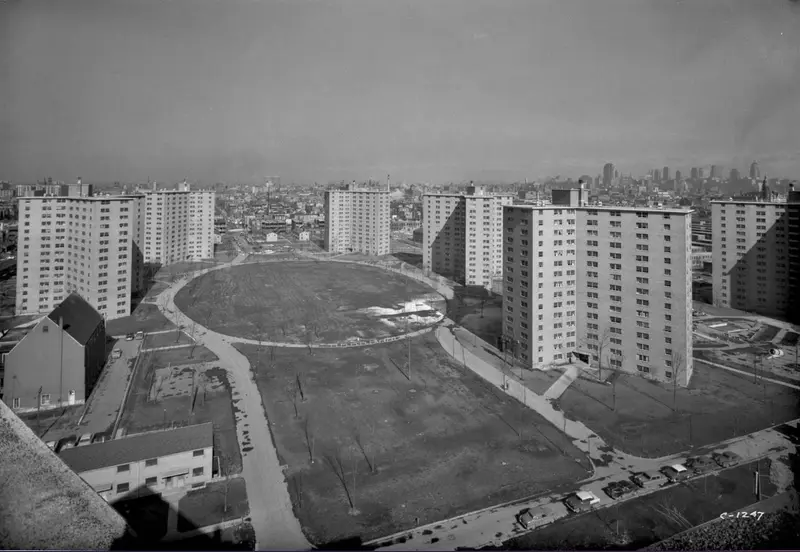
Together they were known as Addams-Brooks-Loomis-Abbott, or ABLA. The Abbott Homes, where more than 1,000 families once lived in high-rises and row houses, stood on the land that would later be offered to the Fire.
When Rita Sallie moved into an apartment in the Abbott Homes as a young mother in 1991, “it was a community,” she recalled.
“Children were outside playing, people watched them, and my kids made lifelong relationships there. But the longer I lived there, the less comfortable I was.”
Management of the properties was often poor and maintenance was neglected. By the mid-1990s, many of the ABLA buildings were deteriorating. City inspectors cited the CHA for poor lighting, broken faucets, leaking roofs, “defective lead-bearing paint” and other code violations at multiple ABLA properties. More than 4 of every 10 ABLA units were vacant or occupied by people without a lease, according to the city. Crime increased.
“They allowed it to become uninhabitable,” Sallie recalled. She and her family moved out in the late 1990s.
After watching the properties decay, the CHA concluded that most failed a HUD “viability test” and would be too expensive to fix up. The agency received nearly $60 million in federal grants and started demolishing ABLA buildings; only the Brooks Homes and Loomis Courts sections of ABLA were left standing and rehabbed. The agency forced thousands of residents to move, promising a “right to return” to those who had not violated the terms of their leases.
The citywide Plan for Transformation, unveiled in 2000, called for the old ABLA to be replaced by a “revitalized” community with more than 3,000 units. But the CHA soon whittled that number down.
In 2003, the agency tapped LR Development, an affiliate of real estate firms Related and Related Midwest, to build 2,441 new units at ABLA sites over the following 10 years. More than 750 town homes and apartments would be set aside for public housing. But most of the new homes would be sold to homeowners either at market rates or for affordable prices, so the redeveloped community would include a mix of incomes. On the site of the former Abbott Homes, planning documents called for hundreds of new residences surrounding a park.
By 2008, the CHA had rebranded ABLA as Roosevelt Square. But Related Midwest already was years behind on delivering the units it had committed to. Then the housing market crashed, and progress stalled around the city.
In the last 14 years, just one new building has gone up at the ABLA sites: A public library with an apartment complex on top of it, which opened on Taylor Street in 2019. Even after that project was finished, the CHA still needed to build 1,773 more units, including 469 for public housing residents, to fulfill its commitments.
Fewer than 800 families have exercised their right to return to ABLA, the CHA said. The agency determined that more than 2,000 families were not eligible, and it lost track of hundreds of others. But, it said, any eligible residents can still claim their right to return.
Sallie said she was never told she might have that option. After leaving ABLA, she found an apartment for her family on Chicago’s Northwest Side. Then, in 2007, her 13-year-old daughter was shot and killed when a gang member fired into a neighborhood park. Sallie eventually found a new home and career in Atlanta.
She suspects the CHA doesn’t want to keep track of former residents like her: “They want to do other things with that land.”
Help for a Billionaire
Mansueto, the Fire’s owner, is one of Chicago’s wealthiest business leaders. He has made donations to the campaigns of several local and state officials, including former Mayor Rahm Emanuel, but not Lightfoot, records show. (Mansueto’s family foundation has donated to a number of cultural and nonprofit entities, including ProPublica.) Last fall Lightfoot praised him during her annual speech on the city’s budget, citing his work with the city on a development project in an economically struggling area on the West Side.
When Mansueto bought the Fire in 2019, his plan was to give the franchise a home inside the city limits. The team would move from a stadium in suburban Bridgeview to playing home games at Soldier Field, owned by the Chicago Park District, on the city’s lakefront.
Finding a site for offices and practice fields proved trickier. “One of the downsides of being in a major metro area like Chicago is it’s pretty well built up,” Mansueto told reporters last year. “There’s not a lot of 25-acre parcels lying around.”
When the team finally found a chunk of land it liked last year — 35 acres of green space between three public schools on the Northwest Side — it couldn’t close the deal with the Chicago school system. Mayoral aides worked closely with Fire officials for months as they presented the plan at a community meeting and then sought approval from the Chicago Board of Education, according to emails obtained by ProPublica through a Freedom of Information Act request. By fall, though, negotiations fell apart over when students would have access to the facilities.
“They did not want to meet our demands and basically walked away,” school board President Miguel del Valle told ProPublica.
The Fire and the mayor quickly pivoted to an option that generated little interference. In October, mayoral aides emailed Lightfoot a 14-page document detailing three “Opportunity Sites” for the practice facility. All three had been empty since the CHA demolished housing developments that were never replaced. One was the ABLA property.
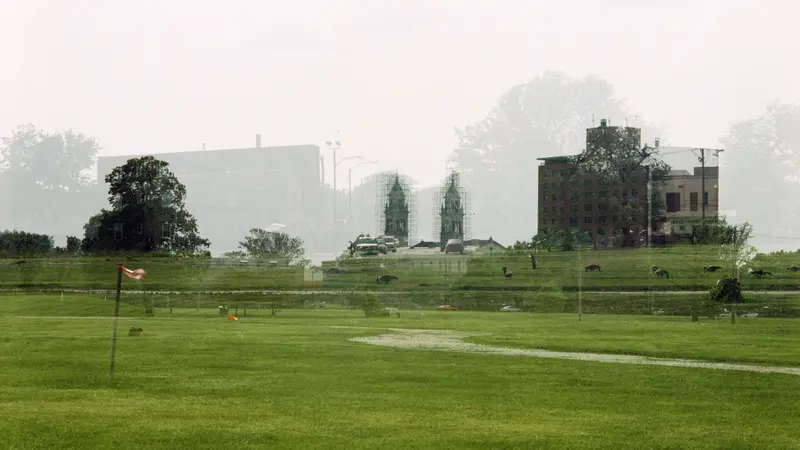
City officials had little reason to worry that the CHA might resist using its land for something other than housing: The agency had already been pursuing a broader development strategy for nearly a decade. In a 2013 update to its transformation road map, the agency declared it wanted to “promote CHA-controlled vacant land as a source for long-term public and private investment opportunity.”
That year, Target opened a new store on property that had been part of the Cabrini-Green development. In 2015, the CHA sold several Taylor Homes parcels to XS Tennis, an athletic and education organization.
Since then, the agency has also allowed its land to be used for a South Side grocery store and a Southwest Side charter school. In each of those cases, the CHA argued that their residents and the public at large would benefit from new neighborhood amenities and the money received for the sale or lease of the land. HUD approved those land uses. The federal agency did not answer specific questions from ProPublica about the transactions but said it “works closely” with the CHA.
The ABLA site offered to the Fire has been empty since the Abbott Homes were torn down. Beyond mowing the grass, the CHA has done little to develop or maintain it, and portions are still covered in rocks or concrete from when a road looped between the apartment buildings.
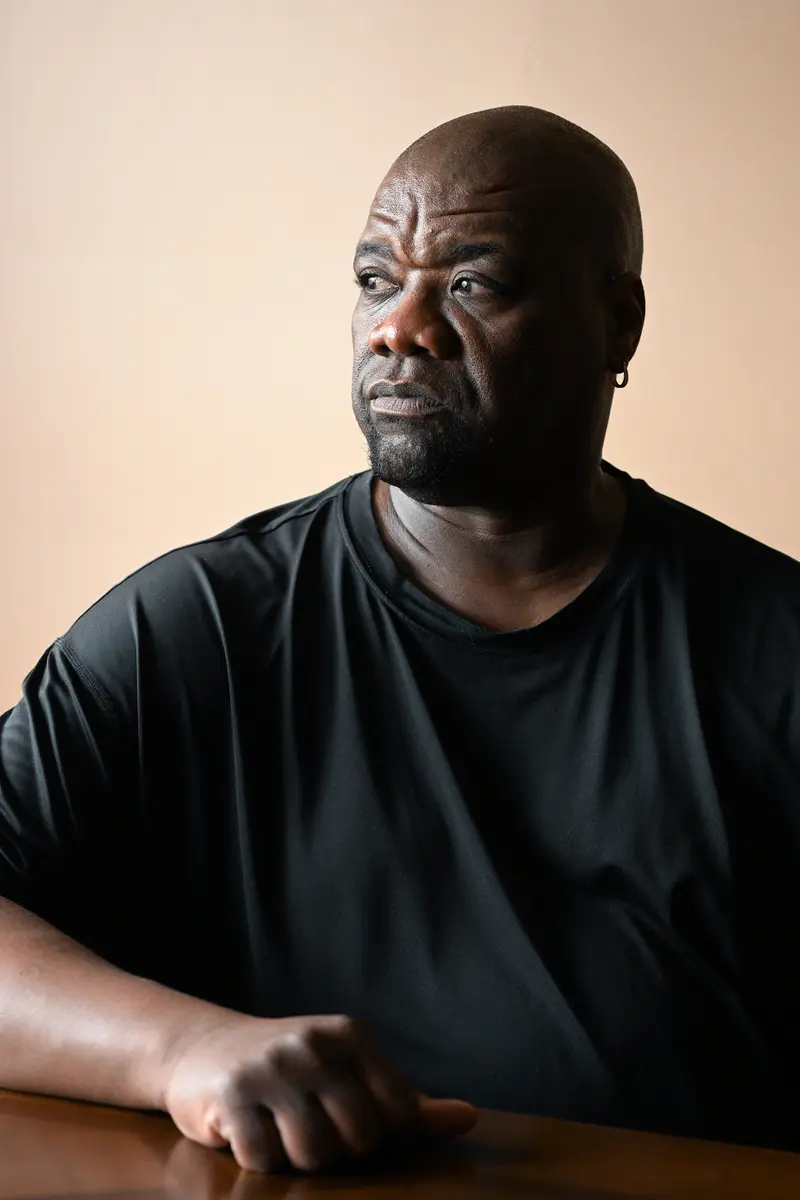
On one of the first warm afternoons of the year, Bryant Spencer and Lewis Clayton were sipping cold cans of beer next to an SUV with its rear door open on the western edge of the property. Both men said they had grown up at ABLA in the 1960s and ’70s — Spencer had been born steps away in a row house that was torn down in the 2000s. Though they live in other parts of Chicago now, “we like to come back and reminisce,” said Spencer.
Neither had heard about the CHA’s impending deal with the Fire. Clayton, a proud military veteran with a salt-and-pepper mustache, said he thought the empty land was supposed to be filled in with new homes.
Spencer nodded. “When they got rid of all the housing over here, they promised they was going to rebuild.”
He looked over the open field. “They always do the Latino and Black people just like that. Always.”
“People Are Waiting”
On Jan. 26, Lightfoot introduced an ordinance to the City Council to authorize financing for the long-delayed next phase of homes at Roosevelt Square. The project is slated to include three new apartment buildings and the rehab of the last remaining building at the Jane Addams Homes, which would include space for the National Public Housing Museum.
Even with these 222 units, the CHA and developer Related Midwest will have produced less than half the new homes promised for the ABLA development two decades ago. In a written statement, a spokesperson for the company said it still plans to bring more housing to the ABLA area: “We continue to closely collaborate with the CHA to build additional homes as funding becomes available.”
Lightfoot’s ordinance acknowledged the need for more housing. Its opening section said: “WHEREAS, the City has determined that there exists within the City a serious shortage of decent, safe and sanitary rental housing available for persons of low- and moderate-income and that the continuance of a shortage of affordable rental housing is harmful to the health, prosperity, economic stability and general welfare of the City ...”
The next day, Lightfoot announced that the city and CHA were engaged in talks to lease the ABLA property to the Fire.
The announcement took many housing advocates and community residents by surprise. In one meeting with resident leaders, Alderman Jason Ervin, who represents the area in the City Council, said he shared concerns about the need for building more housing, according to a meeting participant. But he bluntly advised them that the mayor had called him early one morning and made it clear she really wanted the deal to happen, so they might as well use that as leverage to get something out of it.
Over the following months, officials from the Fire, the city and the CHA met repeatedly with the leaders of the official residents’ group. The Fire promised to upgrade a basketball court and make other community investments, while CHA officials said proceeds from a deal would fund a new round of renovations at the aging Brooks Homes and Loomis Courts. The advisory council leaders eventually got behind the plan.
Ervin later said in an interview that he supports the Fire deal but wants more details. “I think the Fire will honor whatever they agree to. My concern is with the CHA,” Ervin said. “The [housing] units still have to get built. We need to hear where these units are going, especially since they’re carving out this land.”
He added, “We think the development team needs a kick in the rear.”
CHA officials say they have not determined how much money the agency would get from a long-term lease and will commission independent analyses to determine the value.
The CHA has received hundreds of millions of dollars in capital grants from the federal government in the last decade, and last year it made plans to undertake new maintenance work at Brooks and Loomis buildings that were rehabbed at the start of the ABLA revitalization. But officials now say the agency needs money from the Fire deal to fund those repairs.
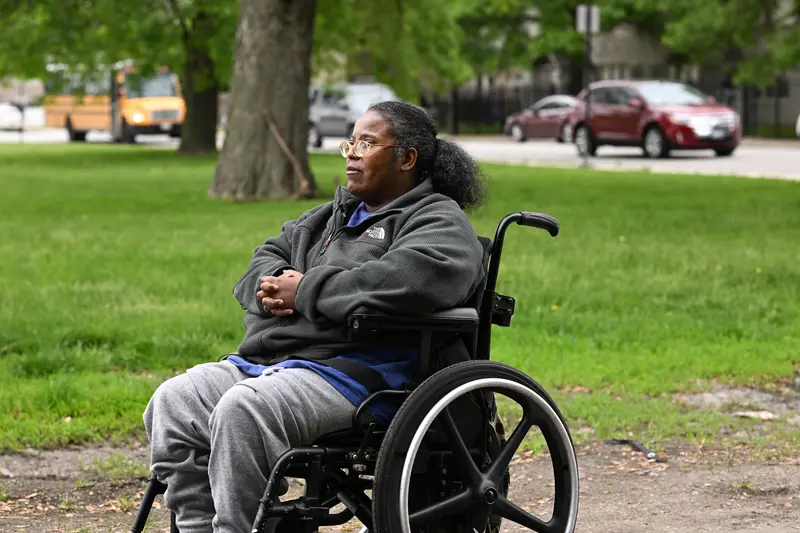
“Our present and future needs — and the housing needs of low-income families — woefully outpace the proposed federal funding amounts,” the CHA’s statement said. “This private-public partnership helps us deliver quality housing.”
The CHA added: “We’ve held significant public engagement around this project thus far and the response has been overwhelmingly positive, including from CHA resident leadership.”
Public housing authorities are required to get federal approval to sell or lease their land, and on May 17 the CHA board discussed whether to start that process for the ABLA site. It represented the first of several steps the CHA has to take before completing the Fire deal. A city planning commission and the City Council would also need to sign off.
When members of the public were allowed to comment at that board meeting, Laura Donaldson, an ABLA resident and advocate for people with disabilities, made a plea for more housing. Donaldson herself was once homeless, and she noted that thousands of people, including many who are disabled like herself, are on the CHA’s waiting lists.
“I don’t know about this plan for the Fire or any of this, but I do know that people are waiting. It takes forever to get called back or interviewed or anything,” she said. “We’re not asking for the Taj Mahal. We’re asking for housing, which is a human right for everyone.”
The board voted unanimously to seek federal backing for a lease deal.
